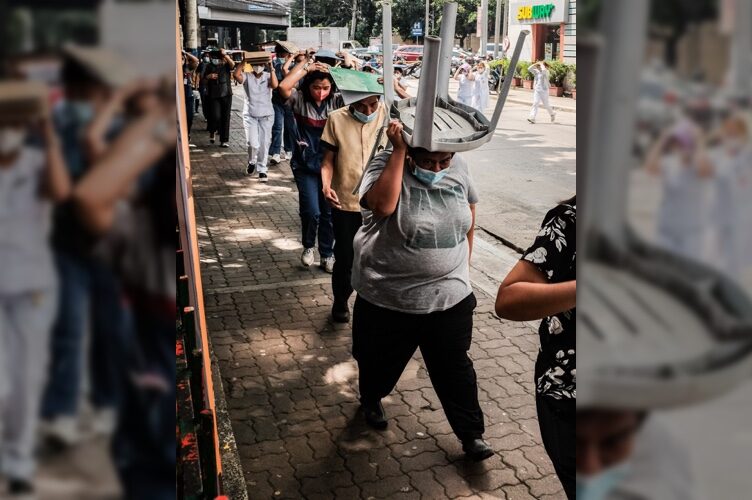AS the country enters a new election season, millions of eligible Filipino voters are expected to elect new leaders who they think are capable of serving the nation.
According to the data from the Commission on Elections (Comelec), a total of 18,280 national and local posts will be up for grabs for the #BotoNgKabataan2025 midterm elections.
Of this number, only 63 seats will be available for party-list representatives. This is not even half of the 156 certified party-list groups approved to be included in the official ballot and will vie for a slot in the House of Representatives.
But with the long list of candidates for next year’s elections, some may wonder: what exactly is a party-list group and why should people vote for them?
Here’s what Gen Z voters know about their role in Congress and what they look for in a party-list group:
Representing various sectors
Under the 1987 Constitution, the party-list representatives are needed to constitute 20 percent of the total members of the House of Representatives. They are expected to help craft laws that will be of interest to their sectors, particularly the marginalized and underrepresented groups like the urban poor, Indigenous cultural communities, women, and the youth.
To make this happen, the Party-List System Act, or Republic Act (RA) No. 7491, was signed into law in 1995, mandating the state to “promote proportional representation in the election of representatives to the House of Representatives through a party-list system.” The first party-list race happened during the 1998 Philippine elections.
“Ito yung magiging representative sa Kongreso ng community or part ng society na kinabibilangan ko, with the goal of addressing certain issues and concerns we want to alleviate,” psychology student Krystel Manlosa, 21, told republicasia when asked about her understanding of the role of a party-list group.
Shainah Babar, a 21-year-old marketing management student, shared the same insight and said, “The role of a party list group is to represent underrepresented parts of the society.”
Meanwhile, 21-year-old communication student Gwyneth Bautista said, “Their role is to provide a voice in the legislature for these sectors and advocate for their needs.”
Kiana Dagoy, 21, highlighted other several powers and responsibilities of party-list representatives as part of the lower house, including reviewing the proposed national budget, authorizing the President to exercise powers to declare national policy in times of war or other national emergency, and even propose changes in the Constitution.
Under RA No. 7491, these party-list groups can be:
- A “sectoral party” or a group of citizens with one advocacy pertaining to the interests and concerns of any of the following sectors: labor, peasant, fisherfolk, urban poor, Indigenous cultural communities, elderly, handicapped, women, youth, veterans, overseas workers, and professionals;
- A “sectoral organization” or a group of citizens who share the same physical attributes or characteristics, employment, interest or concerns; or
- A “political party” that is composed of individuals who have the same ideology, political ideas, and principles
Securing seats in Congress
To secure their place in the House of Representatives, a party-list group must receive at least two percent of the total votes for the party-list system to earn one seat in the lower chamber.
If the group gets more than two percent of the total votes, they are entitled to additional seats but not more than three.
But what about the party-list groups who fail to reach the two percent threshold? They can still secure a spot in Congress if those who meet the two percent quota cannot fill up the 20 percent allocation for party-list representatives or the 63 seats in the 2025 polls.
Party-list representatives will serve for a term of three years. They can be nominated by their party or organization for not more than three consecutive terms.
The Comelec introduced a new guideline for party-list groups that required them to submit 10 names of their nominees, increasing the original five nominees mandated by the law. This was to prevent nominees from resigning and submitting new names for their replacements once they won, said the Comelec.
Comelec chair George Erwin Garcia previously said that if all nominees resign, their party-list group would no longer have representatives in Congress because the poll body would not accept a new list of nominees.
The ranking is important when listing the nominees because the first one on the list will assume the seat if the party-list group wins. In case of vacancy, the law states that the next nominee of the party-list group shall assume the seat automatically.
Nominated party-list representatives should be:
- A natural-born citizen of the Philippines
- A registered voter
- A resident of the Philippines for a period of not less than one year immediately preceding the day of the election
- Able to read and write
- Bona fide member of the party or organization which he seeks to represent for at least 90 days preceding the day of the election
- At least 25 years of age on the day of the election
Meanwhile, nominees of the youth sector must at least be 25 but not more than 30 years old on the day of the election. Those who will reach the age of 30 during their term will be allowed to serve until their term ends.
Voting for one party-list
Each Filipino voter can only vote for one party-list group in the May 2025 midterm elections, that is why Gen Zs are critical of who they will vote for.
Among the qualities the four college students look for in a party-list group are specific platforms and advocacies, a clean track record, transparency, compassion, and accountability.
“I am looking for a party-list group who has a genuine concern for the people they represent, who is willing to [be in the shoes] of their people, [and] who is not just there to gain power but have compassion [for] the people,” said Bautista.
Dagoy, on the other hand, said she would vote for a party-list group who “knows how to take responsibility for every decision they make and how to make up for it.”
These students hope that the party-list groups who will win seats in Congress will prioritize crafting laws that will not only benefit their sectors but also help improve the country’s education system and create more job opportunities that offer reasonable wages to the youth.
They also left the same message to their fellow Gen Z voters for the upcoming polls: choose wisely.
“Sana naman natuto at matuto na tayo sa mga nangyari noong nakaraang eleksyon. Nasa kamay naman natin ang pagbabago,” said Manlosa.
Dagoy, meanwhile, stressed, “We cannot decide for people who want to run for candidacy but we can choose the right person to take it. Vote wisely!”
How useful was this post?
Click on a star to rate it!
Average rating 0 / 5. Vote count: 0
No votes so far! Be the first to rate this post.
We are sorry that this post was not useful for you!
Let us improve this post!
Tell us how we can improve this post?









